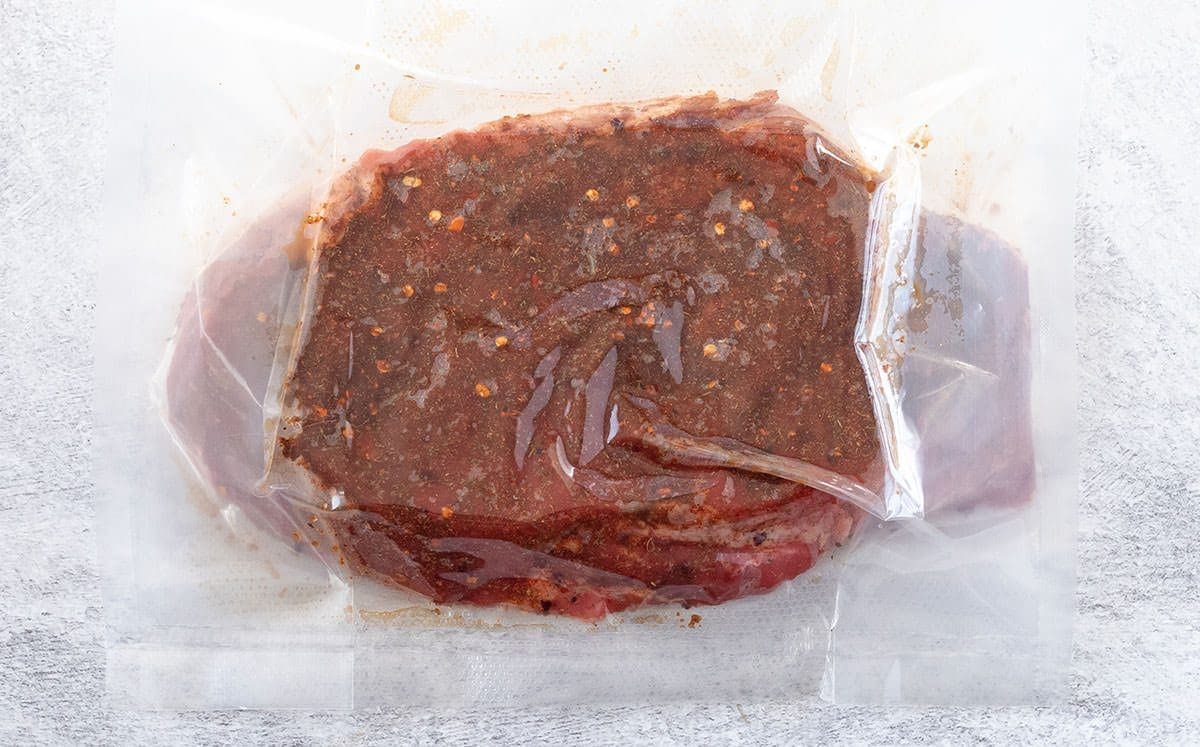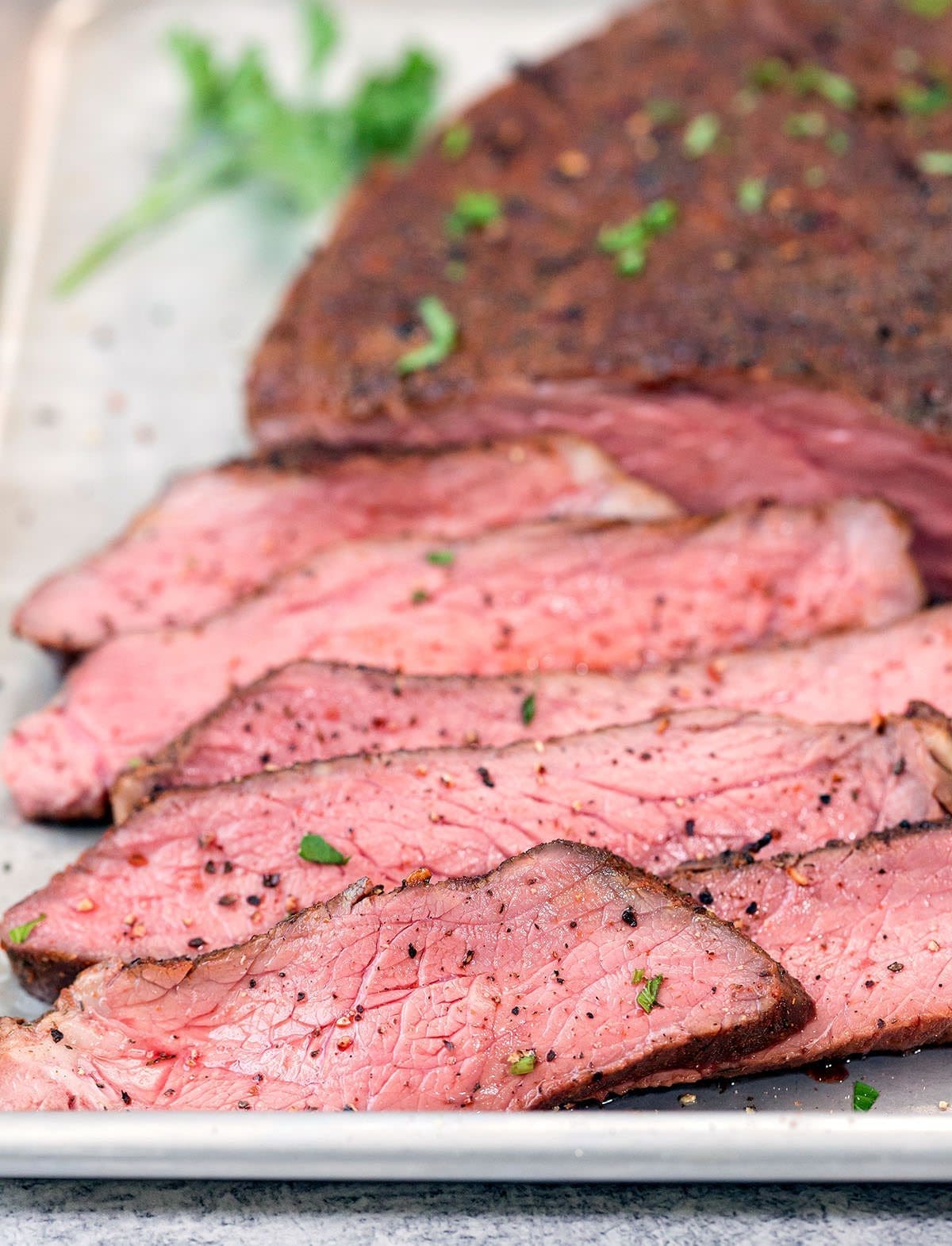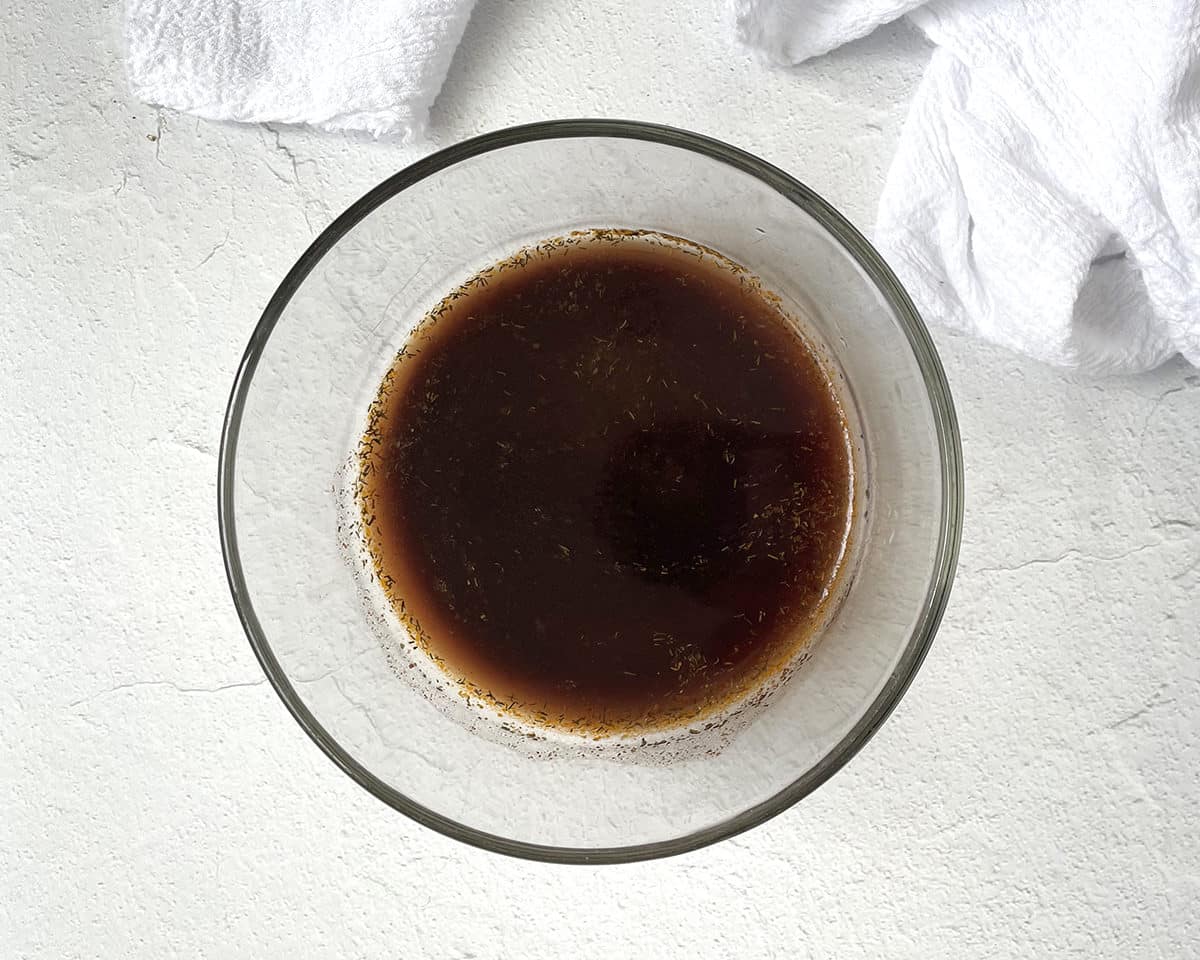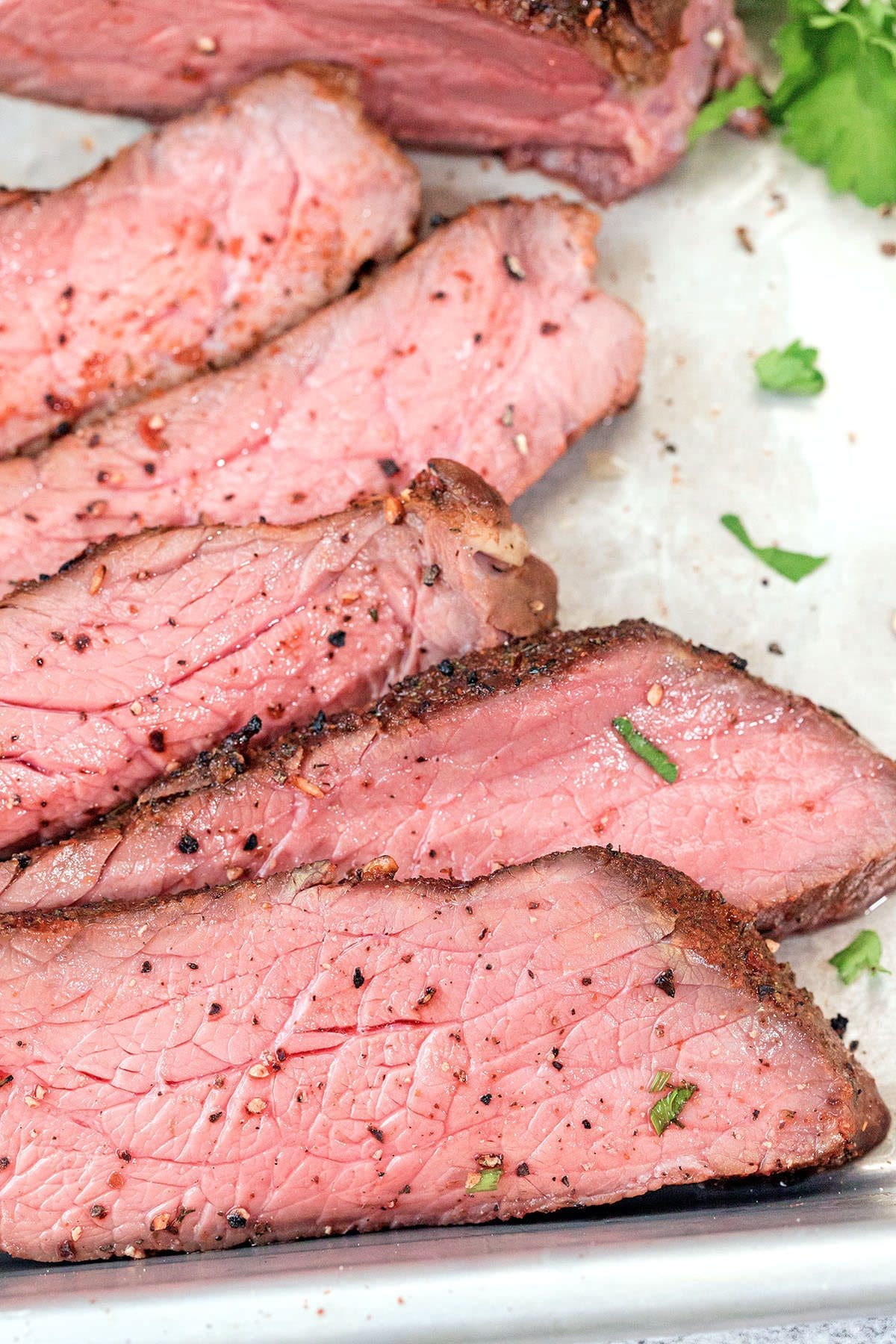Tender and juicy Sous vide London grill Recipe seared backwards for a nice brown crust. You won’t believe how incredibly tender and flavorful a London Broil roast can be. It’s as good as our popular Smoked London Broil.
Our secret ingredient? Better than broth! It adds a TON of flavor and leaves the meat with a nice brown tint versus an unsightly pale tint.
You’ll notice how nice and brown our roast is, as well as the leftover liquid when they’re done cooking.
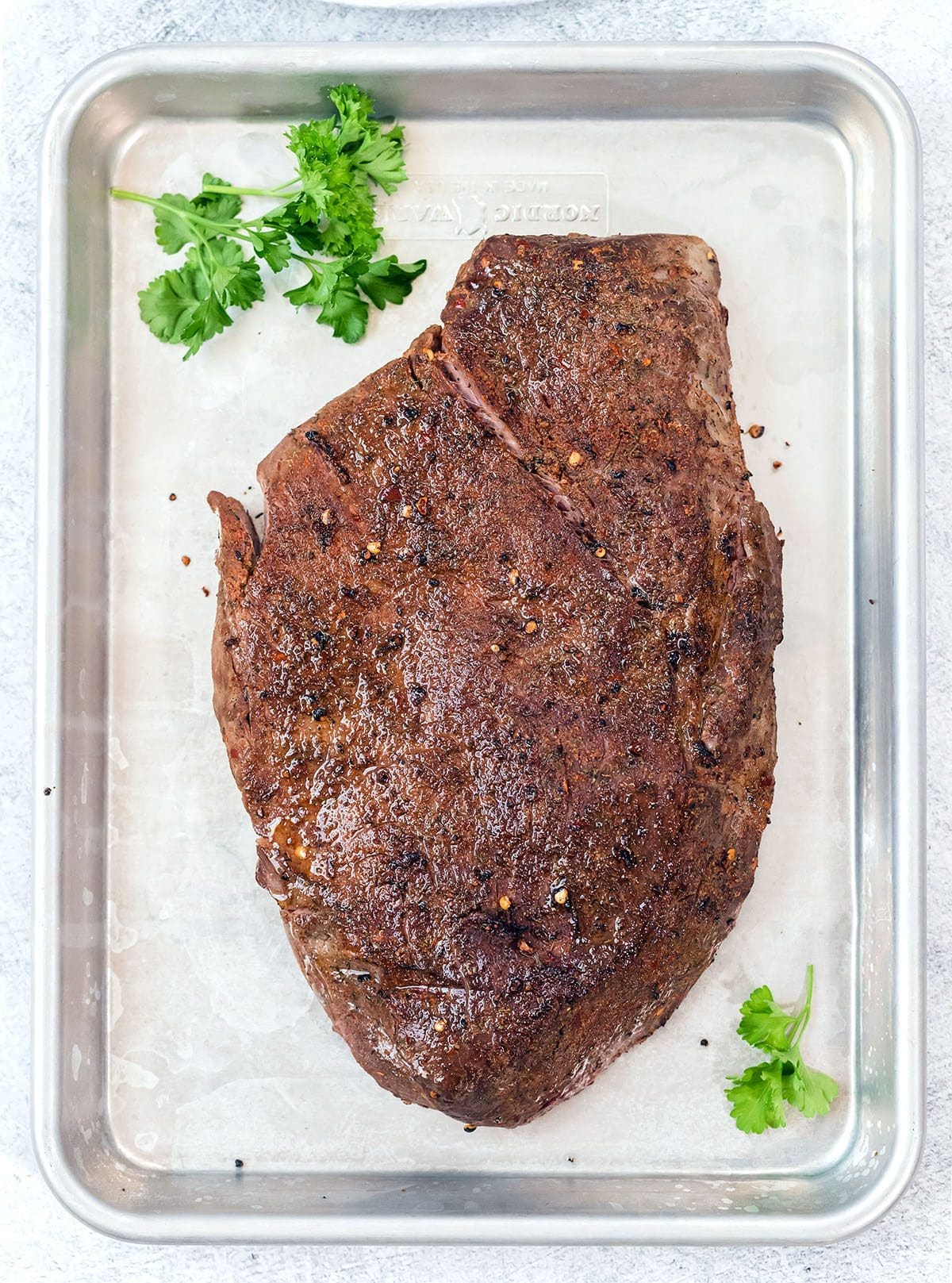
Also think about the beef au jus or gravy you can make with it. Or use the pan juices to make mushroom sauce.
More Sous Vide Recipes to Try: Sous Vide Prime Rib, Sous Vide Chuck Roast, Sous Vide Ribeye, sous vide lamb chops, Sous vide short ribs and Sous vide tri tip.
What is London Broil?
London Broil is not a specific cut of beef, but refers to the preparation of selected tough cuts of beef. The two most popular cuts for London Broil are Flank Steak and Top Round Steak, which is the cut we feature here.
London Broil is an inexpensive cut of beef as it is a tougher cut with little marbling. As such, it must be cooked low and slow to produce edible results. Cooking a London Broil sous vide is the best way to cook London Broil as it transforms a tough cut of meat into a tender steak.
How to cook London Broil
Sous Vide London Broil is remarkably easy to master. Only a few steps separate you from your perfect roast beef.
Step 1 – Preheat the sous vide water bath to your preferred temperature using a sous vide immersion thermostat (see London Broil internal temperature chart below).
Step 2 – Prepare the roast by rubbing it with your desired seasoning. Options are below! Place the seasoned roast in the sous vide bag and vacuum seal.
Step 3 – Transfer the London Broil to your sous vide machine and set the timer to the correct length (7-9 hours).
Step 4 – In a very hot preheated cast iron skillet, sear the roast for 45 seconds per side to develop a nice brown color.
Timed coordination
This top round recipe calls for a minimum of 7 hours to a maximum of 9 hours in a double boiler. We’ve seen other websites list a maximum time of up to 24 hours, but you’ll be VERY disappointed with the result. We tested it for you, and here are the results:
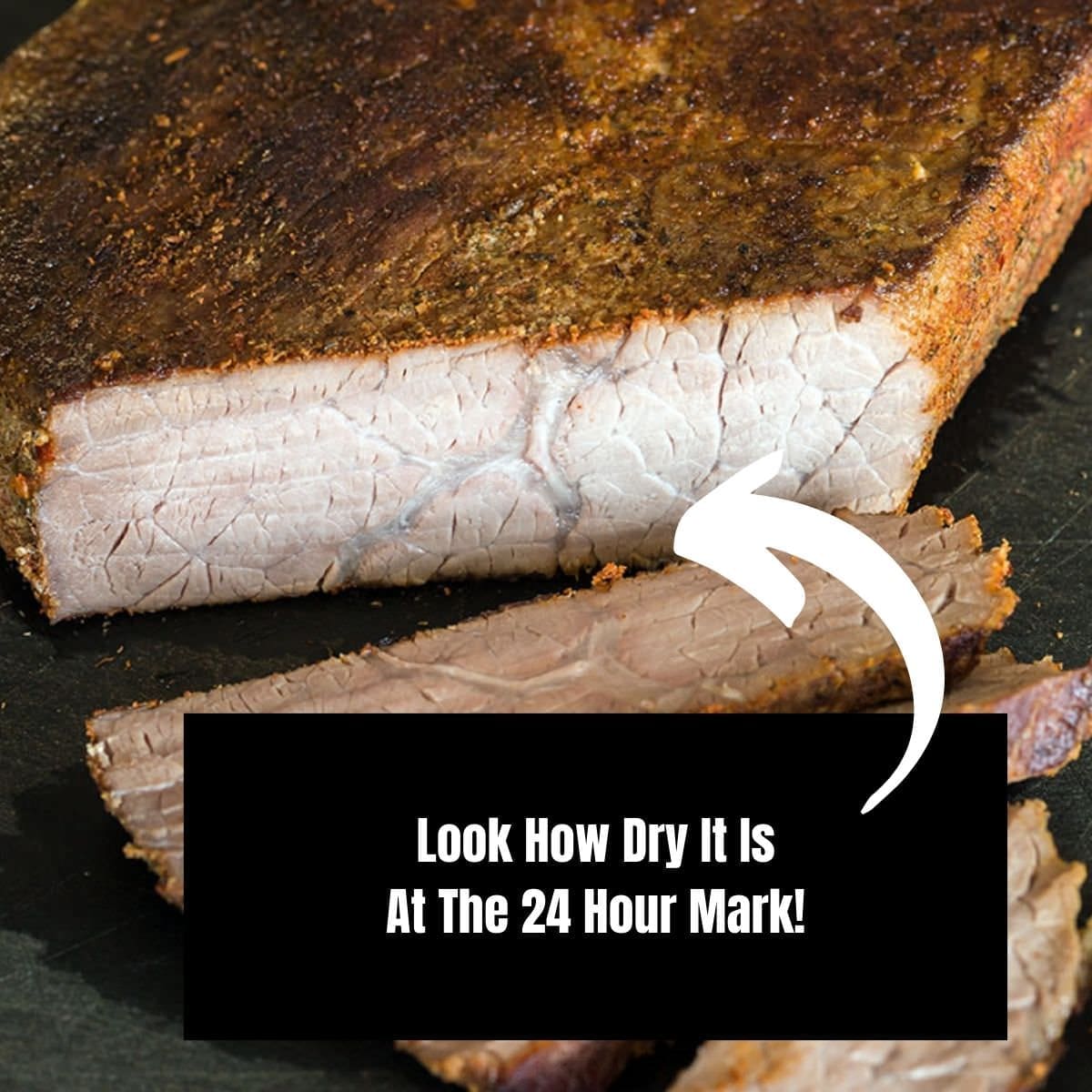
Internal temperature of London Broil
Our preferred temperature is 132°F. At this temperature it is consistently warm and pink. Reverse frying only increases the temperature by a maximum of 1-2°. So keep that in mind when choosing your doneness.
- Rarely: 125°F (not recommended)
- Half done: 135°F
- Middle: 145° F
- Middle fountain: 155°F
- Well done: 160°F+
We strongly advise you not to cook it above 145°F as it will be chewy and inedible. If you’re well done, you might want to skip London Broil altogether.
*USDA recommends cooking steaks and roasts at a minimum of 145°F for safety reasons.
London Broil Marinade
There are loads of London Broil seasoning options you can use, so go with what you love. The best marinade for London Broil is one that you personally like. Here are a few ideas:
Steak Dipping Sauces
We have some amazing dipping sauce recipes perfect for sous vide London broil: horseradish for prime rib, horseradish aioli, prime rib sauce, cajun sauce, and garlic butter sauce. Make your choice!
Make a beef au jus with the leftover juices in the bag. Just add the juices to the beef broth. Look how pretty the juice is thanks to the bouillon.
Aromatic ideas
Throw some flavorings in the vacuum bag for an extra flavor boost. Here are a few ideas: thyme, rosemary, oregano, onion, shallot, etc. Sous vide brings out the concentration of the herbs, so use sparingly.
Equipment needed
- Sous vide immersion thermostat – Any brand will work! We use the Anova Immersion Circulator.
- Vacuum Sealed Bags – You can always use a ziploc bag and use the water displacement method versus a vacuum sealer with a sous vide bag if you wish.
- Sous Vide Food Containers – We use this sous vide food container for our sous vide beef recipes, but you can use any large stock pot.
- Cast iron pan – Use a large enough cast iron skillet or griddle for a large roast beef. A stainless steel frying pan will also work, but it is imperative that you preheat it and use plenty of oil and/or butter to keep it from sticking.
How to reheat Beef London Broil
The best way to reheat London Broil is to reheat it in a water bath! Heat the water to just below the boiling temperature you used on the first run. It should take about an hour to heat up.
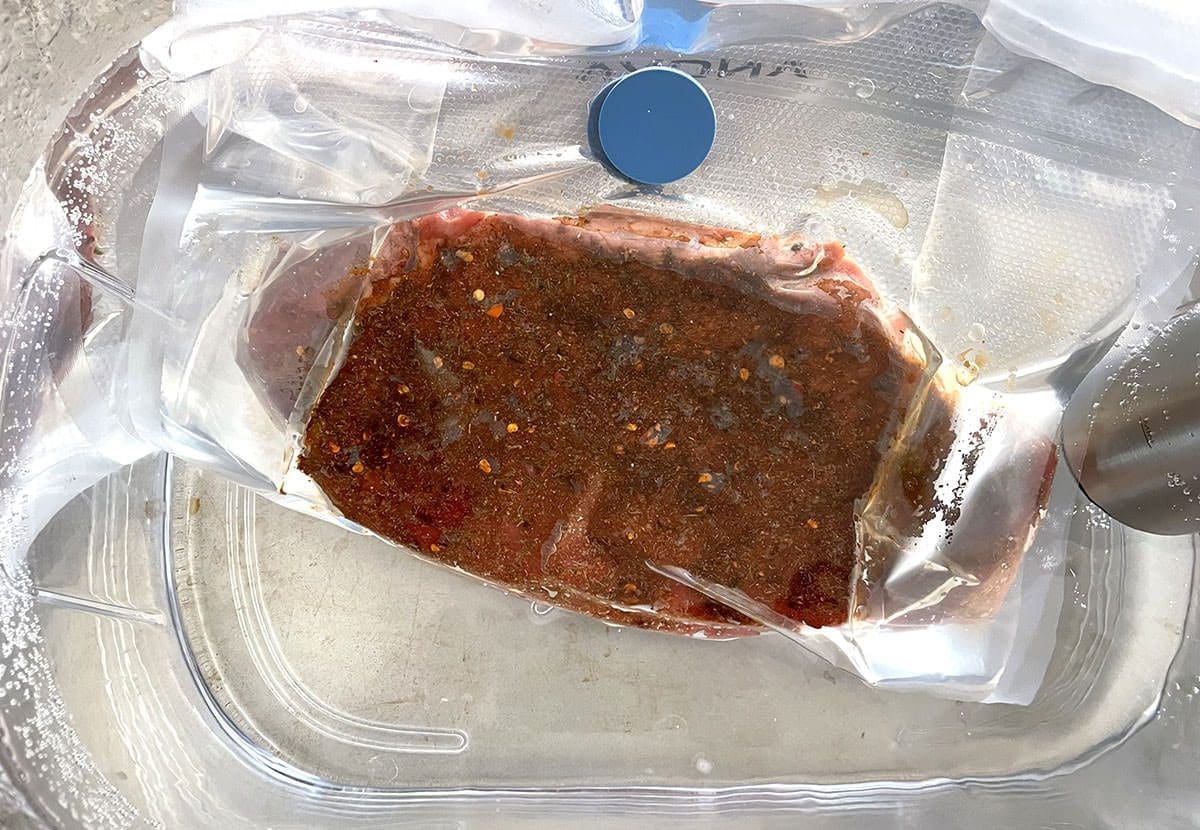
expert tips
- Take the extra step of pounding the meat with the serrated side of a meat mallet. It will break down the tough connective tissue to add tenderness.
- Make sure the meat is fully submerged in the sous vide bath. If the meat isn’t fully submerged, it won’t cook properly. Do not even try as food safety would not be guaranteed.
- If your sous vide bag is floating, try resealing it or use something to weigh it down in the sous vide bath. You can always add a couple of heavy spoons or pie crust weights to the bag before sealing, or invest in sous vide weights.
- Cap the temperature on medium. London Broil is low in fat and therefore becomes tougher after a certain temperature.
- Reserve searing beef produces a lot of smoke. Turn on the stove fan or open the windows before turning on the stove to get ahead of it. expect it
- Be sure to thoroughly pat the cooked London Broil roast dry with paper towels. To get a good crust in the pan, the roast must be dry.
- Slice thinly and against the grain. I repeat. Slice thinly and against the grain.
remnants of ideas
If you have spare sous vide London broil, here are a few beef recipes to use:
Tri tip sandwich
Prime rib sandwich
Steak Fajitas
Hunan beef
wine pairings
Wine – Bordeaux, Cabernet Sauvignon, Merlot, Syrah, Malbec, Tempranillo
London Roast Sous Vide
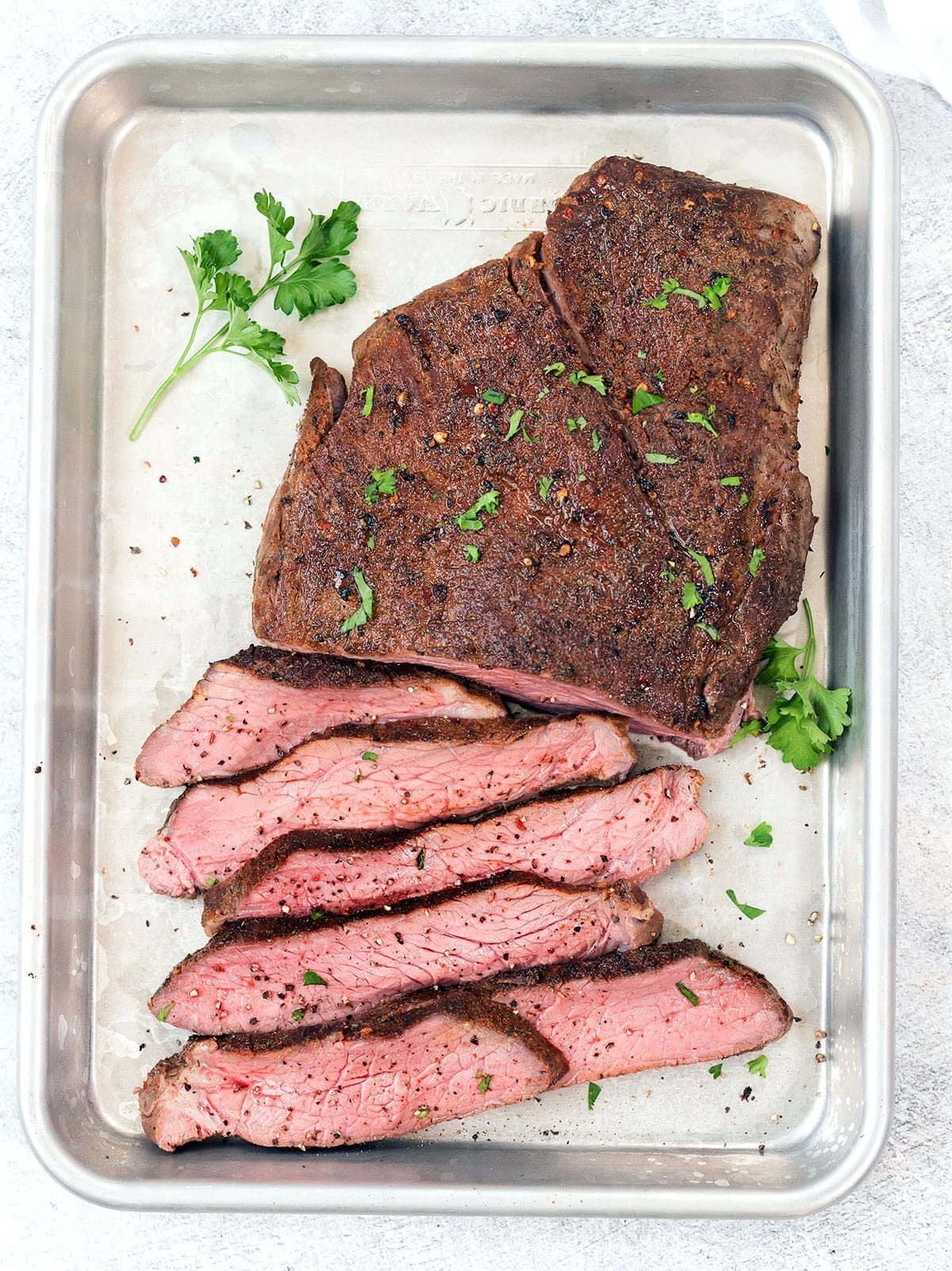
Servings: 8th portions
Calories: 149kcal
Costs: $10
SEASON THE LONDON BROIL:
-
Pat the roast dry with paper towels and generously rub the Better Than Bouillon over the roast. The larger the roast, the more you’ll need. Start with 1 tbsp and increase from there.
-
Rub the roast with Montreal seasoning (or your favorite dry rub). The larger the roast, the more you’ll need. Start with 1 tbsp and increase from there.
-
Transfer the roast to a sous vide bag of your choice.
PREPARE THE ROAST:
-
Preheat the water bath to the desired doneness (*Note 3) using a sous vide immersion thermostat.
-
Transfer the vacuum bag to the water bath and cook for a minimum of 7 hours, up to 12 hours. (*Note 3)
-
Using tongs, carefully remove the bag from the water bath. Remove the roast from the bag and pat dry.
BACK SEAR:
-
Add enough oil (about 1-2 Tbsp) to coat the bottom of a cast-iron skillet and heat over high heat until scorching (it will start smoking when done). This takes about 3-5 minutes. (*Note 5)
-
Sear each side of the roast for 45 seconds.
-
Turn off the stove and place the roast on a cutting board. Cut against the grain. No rest necessary.
Note 2 – Use your favorite dry rub or just salt and pepper.
Note 3 – Sous vide tri tip temperature
Reverse searing only increases the temperature by a maximum of 1-2° (if available). So keep that in mind when choosing your doneness.
-
- Rarely: 125°F (not recommended)
- Half done: 135°F
- Middle: 145° F
- Middle fountain: 155°F
- Well done: 160°F+
We strongly advise you not to cook it above 145°F as it will be chewy and inedible. If you’re well done, you might want to skip London Broil altogether.
Note 4 – How long to cook Tri Tip
This top round recipe calls for a minimum of 7 hours to a maximum of 9 hours in a double boiler. We’ve seen other websites list a maximum time of up to 24 hours, but you’ll be VERY disappointed with the result. We tested it for you, and here are the results.
Note 5- Reserve searing produces LOTS of smoke. Turn on the stove fan or open the windows before turning on the stove to get ahead of it. expect it
Calories: 149kcal | Carbohydrates: 1G | Protein: 26G | Fat: 4G | Saturated Fatty Acids: 1G | Polyunsaturated fat: 0.2G | Monounsaturated fatty acids: 2G | Cholesterol: 69mg | Sodium: 73mg | Potassium: 430mg | Fiber: 0.1G | Sugar: 0.03G | Vitamin A: 26ie | Vitamin C: 0.1mg | Calcium: 35mg | Iron: 3mg


